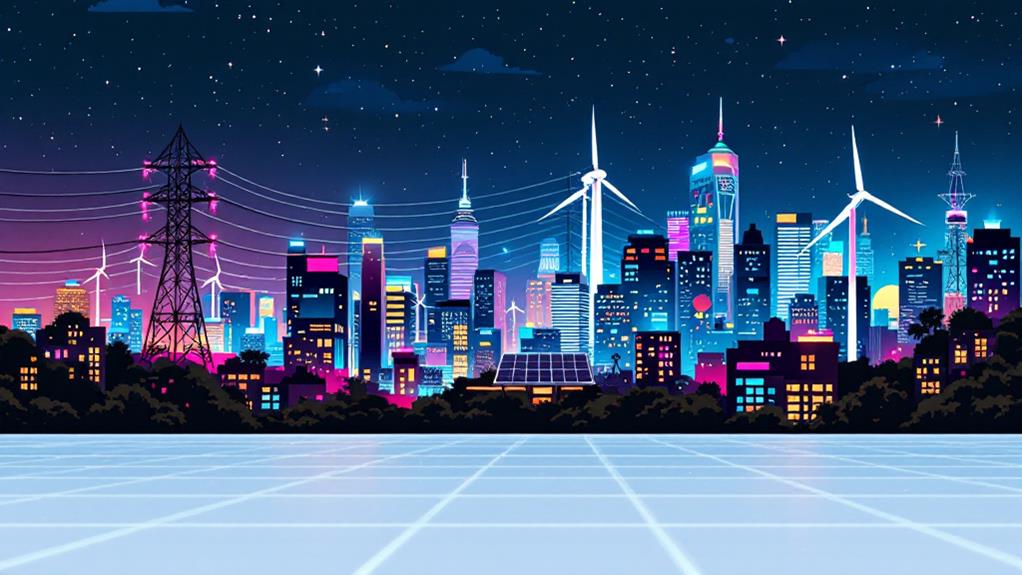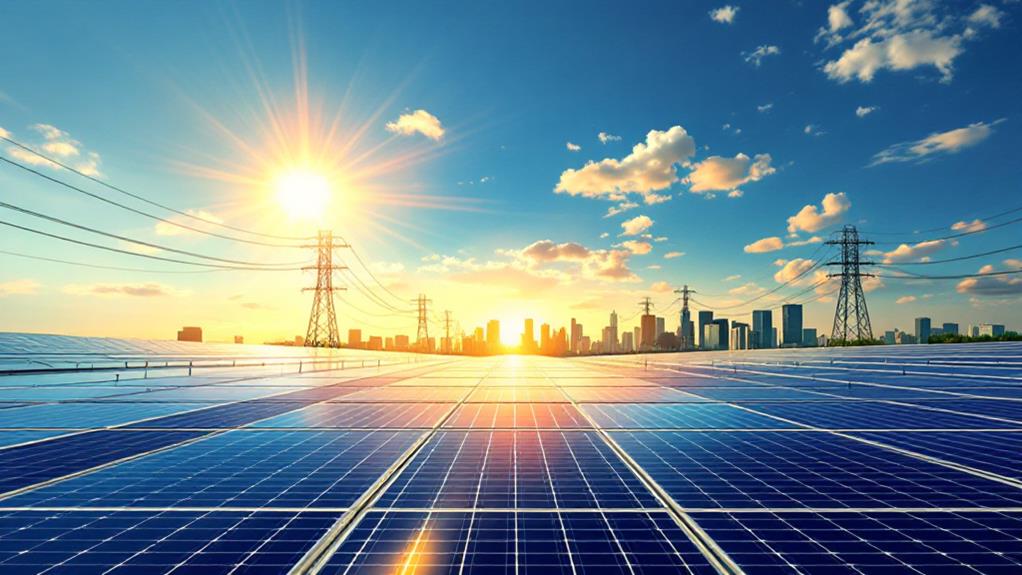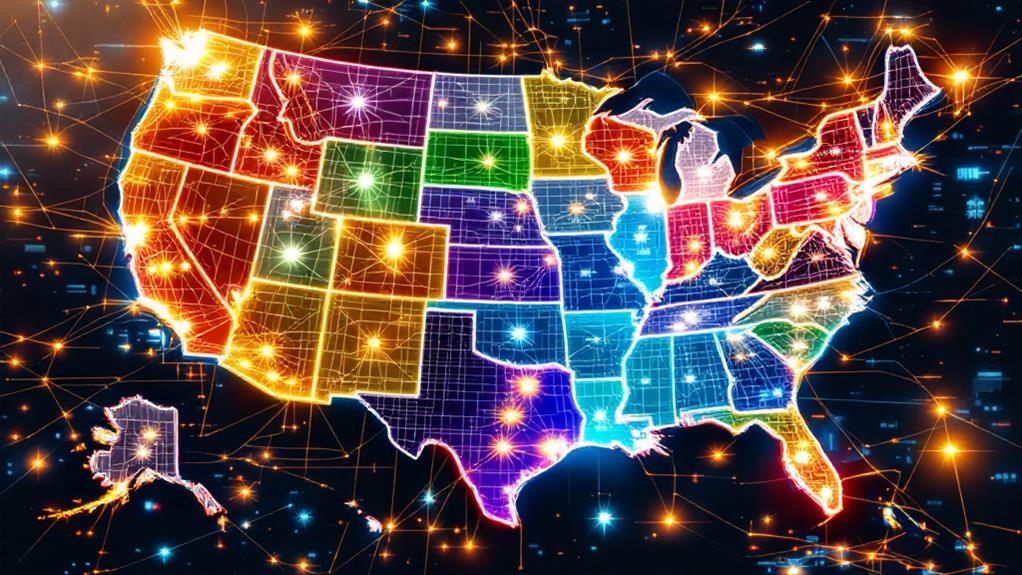The Evolution of the Power Grid: How Electricity Powers the World
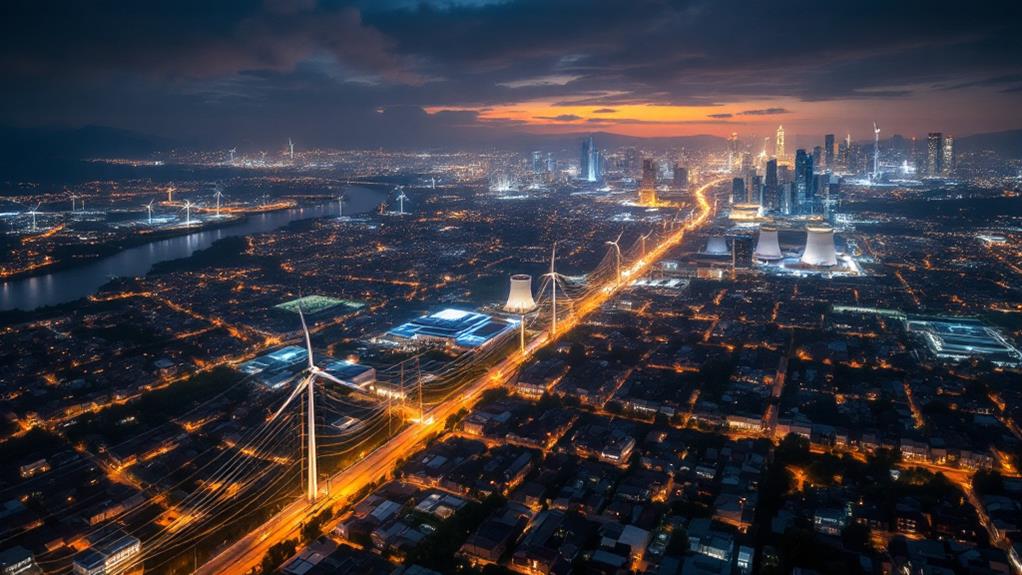
The power grid has come a long way since electricity's early days. You've seen it evolve from localized DC systems to interconnected AC networks spanning continents. The grid's growth enabled widespread electrification, fueling industrial progress and modern lifestyles. Along the way, it's faced challenges like environmental concerns and cybersecurity threats. Today's smart grids use advanced technologies to improve efficiency and integrate renewables. As global electrification efforts continue, the future promises even more innovations like microgrids and peer-to-peer energy trading. The power grid's trek is far from over, with exciting developments on the horizon that will shape how you interact with electricity.
Early Days of Electricity
Electricity's humble beginnings can be traced back to the late 19th century when pioneers like Thomas Edison and Nikola Tesla laid the groundwork for modern power systems. Their early electrical experiments paved the way for the development of power generation and distribution methods we rely on today.
You might be surprised to learn that early power generation was a localized affair. Small power plants served limited areas, often powering just a few city blocks. These early systems used direct current (DC), which couldn't travel long distances without significant power loss.
As demand for electricity grew, so did the need for more efficient distribution. The introduction of alternating current (AC) by Tesla revolutionized the industry, allowing for long-distance power transmission. This breakthrough led to the creation of larger power plants and more extensive grids.
During this period, you'd have seen a rapid expansion of electrical infrastructure. Cities began installing street lights, and homes started adopting electric appliances. The race was on to electrify America, with competing companies vying for contracts to light up towns and power industries.
Birth of the Power Grid
The shift from localized power systems to a unified grid marked a significant milestone in electrical history. As electricity demand grew, engineers realized that centralized distribution could provide power more efficiently and reliably. This led to the birth of the power grid as we comprehend it today.
In the late 19th century, you'd have seen the first steps towards a connected network. Early transmission lines began to link power stations to nearby cities, allowing for the distribution of electricity over longer distances. These lines were initially limited in reach, but they laid the groundwork for future expansion.
The concept of interconnected systems gained traction as utilities recognized the benefits of sharing power resources. You'd have witnessed the gradual development of regional grids, which eventually merged into larger networks. This evolution allowed for better load management and increased reliability.
The birth of the power grid revolutionized energy distribution. It enabled the electrification of rural areas, standardized voltage levels, and paved the way for the modern electrical infrastructure you depend on today. This interconnected system became the backbone of industrial growth and technological advancement in the 20th century.
Standardization and Expansion
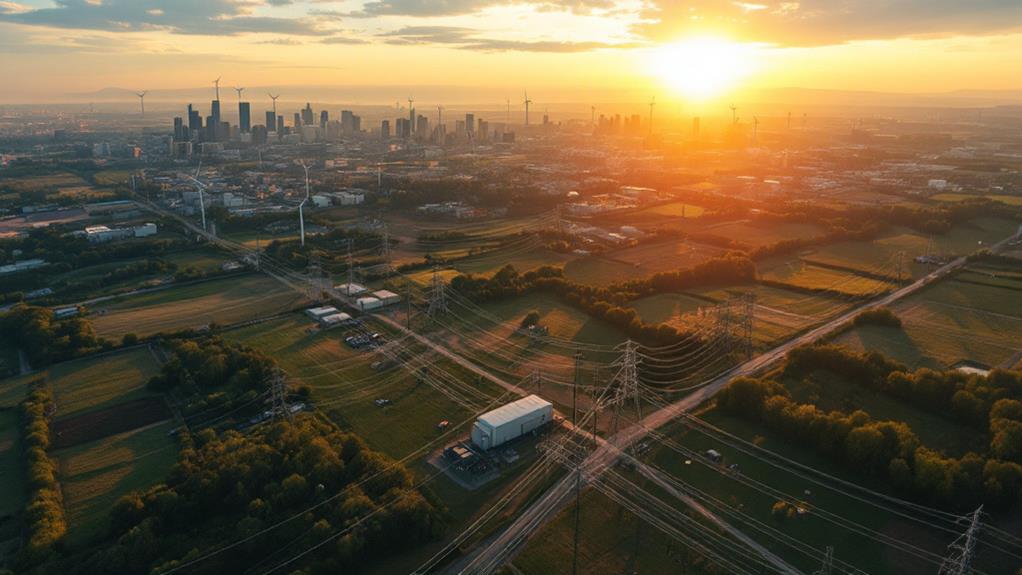
As the power grid evolved, you'd have noticed a push towards standardization and expansion. The early 20th century saw a rapid growth in electricity demand, prompting utilities to develop uniform practices and technologies. This standardization allowed for more efficient power distribution and easier interconnection between regions.
During this period, you would've witnessed:
- The establishment of regulatory bodies to oversee grid operations
- The adoption of alternating current (AC) as the primary transmission method
- The creation of large-scale power plants to meet growing energy needs
As the grid expanded, it became more complex and interconnected. You'd have seen the emergence of regional power pools, enabling utilities to share resources and improve reliability. This expansion also paved the way for modern concepts like distributed generation and microgrid implementation.
Distributed generation allowed you to produce electricity closer to the point of consumption, reducing transmission losses and increasing grid resilience. Meanwhile, microgrid implementation gave you the ability to create localized power systems that could operate independently or in conjunction with the main grid, enhancing flexibility and reliability in power distribution.
The Rise of Nuclear Power
Around the mid-20th century, you'd have witnessed a revolutionary shift in power generation with the advent of nuclear energy. Nuclear power plants began to spring up across developed nations, promising a cleaner and more efficient alternative to fossil fuels. You'd have seen how these plants use nuclear fission to generate massive amounts of electricity, with just a small amount of uranium fuel producing enormous energy output.
As nuclear technology advanced, you'd have noticed ongoing research into nuclear fusion advancements, aiming to capitalize on the power of the sun on Earth. While fusion remains elusive, it offers the potential for nearly limitless clean energy. You'd also have observed the challenges of nuclear waste management, as scientists and engineers work to develop safer storage methods and reduce the long-term environmental impact of radioactive waste.
Despite concerns about safety and waste, nuclear power has become a significant part of many countries' energy portfolios. You'd have seen how it provides a reliable baseload power source, complementing renewable energy sources like wind and solar. As the world grapples with climate change, nuclear energy continues to play an important role in the changing power grid.
Environmental Concerns and Regulations
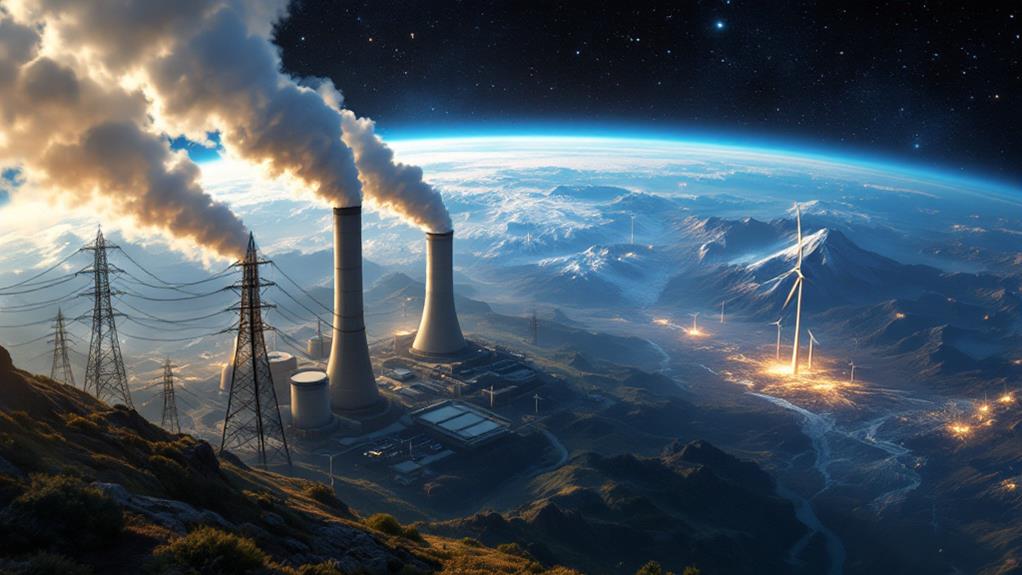
While the power grid evolved to meet growing energy demands, environmental concerns began to shape its development. You've likely noticed the shift towards cleaner energy sources and stricter regulations on power plants. Environmental impact mitigation became a priority as scientists and policymakers recognized the long-term consequences of unchecked emissions.
In response to these concerns, governments worldwide implemented regulations to:
- Reduce carbon emissions from power plants
- Promote renewable energy adoption
- Enforce stricter environmental impact assessments
You'll find that carbon emission reduction targets have driven innovation in power generation technologies. Power companies now invest heavily in cleaner alternatives like wind, solar, and hydroelectric power. They're also implementing advanced filtration systems and carbon capture technologies to minimize the environmental footprint of existing fossil fuel plants.
As a consumer, you've probably noticed changes in your energy bills and options. Many utility companies now offer green energy plans, allowing you to support renewable sources. You may have also seen incentives for energy-efficient appliances and home solar installations, all part of the broader effort to create a more sustainable power grid.
Renewable Energy Integration
The integration of renewable energy sources into the power grid marks a significant shift in how we generate and distribute electricity. You'll notice that solar panels, wind turbines, and other clean energy technologies are becoming increasingly common sights across landscapes worldwide. This transition isn't just about reducing carbon emissions; it's fundamentally changing the structure of our power systems.
As you investigate this evolving landscape, you'll encounter the concept of distributed generation. This approach allows you to generate electricity closer to where it's used, reducing transmission losses and increasing grid resilience. You might even become a "prosumer," both producing and consuming energy through rooftop solar panels or small-scale wind turbines.
However, you'll find that integrating these variable renewable sources presents challenges. That's where energy storage solutions come in. You'll see advancements in battery technology, pumped hydro storage, and even innovative concepts like flywheel energy storage. These systems help balance supply and demand, ensuring you have power when the sun isn't shining or the wind isn't blowing. As you witness this reformation, you're part of a global shift towards a cleaner, more flexible energy future.
Smart Grids and Digital Technology
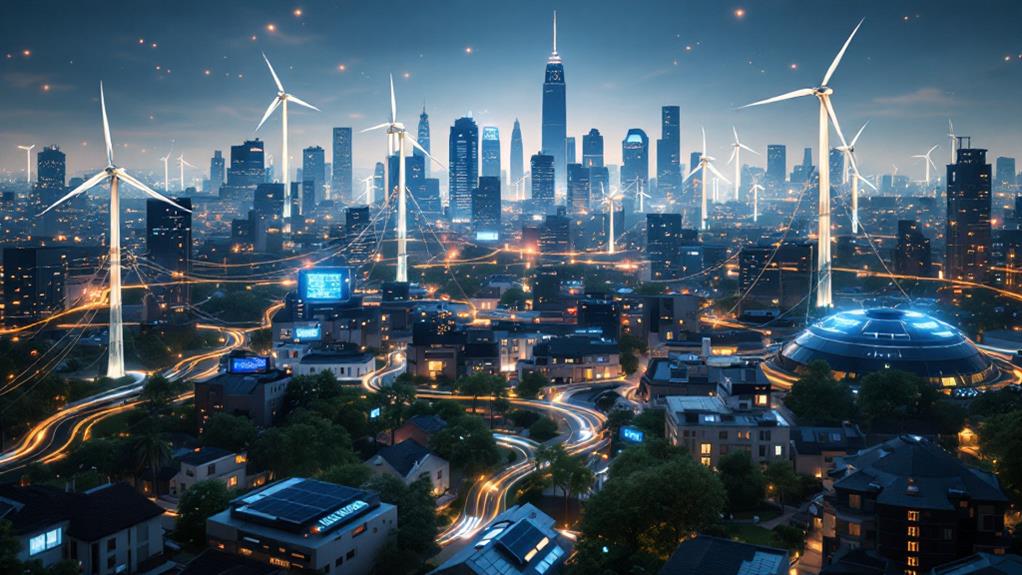
As you investigate the world of smart grids and digital technology, you'll find that power distribution is becoming increasingly intelligent and responsive. Smart grids employ advanced sensors, automation, and communication technologies to monitor and control the flow of electricity in real-time. This allows for more efficient energy distribution, reduced power outages, and improved integration of renewable energy sources.
One of the key features of smart grids is demand response, which enables consumers to adjust their electricity usage based on price signals or grid conditions. You'll be able to optimize your energy consumption and potentially save money on your utility bills.
Improved reliability and faster outage recovery, enhanced energy efficiency and reduced carbon emissions, and greater consumer control over energy usage and costs are three major benefits of smart grids.
However, with increased connectivity comes new challenges. Cybersecurity threats are a growing concern for smart grids, as hackers could potentially disrupt power supplies or access sensitive data. As smart grid technology continues to develop, ongoing efforts to strengthen security measures and protect critical infrastructure from cyber attacks will be observed.
Grid Resilience and Security
Facing mounting threats from extreme weather events and cyber attacks, grid resilience and security have become paramount concerns for power utilities and policymakers. You've likely experienced power outages during storms, but today's threats extend beyond natural disasters. Cybersecurity threats pose a significant risk to the power grid, with hackers potentially disrupting electricity supply to millions.
To combat these challenges, utilities are implementing multi-layered defense strategies. They're hardening physical infrastructure, installing smart sensors to detect and isolate faults quickly, and developing sophisticated cybersecurity protocols. You'll find that many critical facilities now have backup power systems, such as generators or microgrids, to guarantee continuous operation during outages.
Grid operators are also focusing on rapid recovery capabilities. They're using advanced modeling techniques to predict potential failures and plan accordingly. You'll notice increased investments in workforce training, ensuring that personnel can respond effectively to both physical and digital threats. As the grid becomes more interconnected and reliant on digital technologies, maintaining its resilience and security will remain a top priority to safeguard your power supply.
Global Electrification Efforts
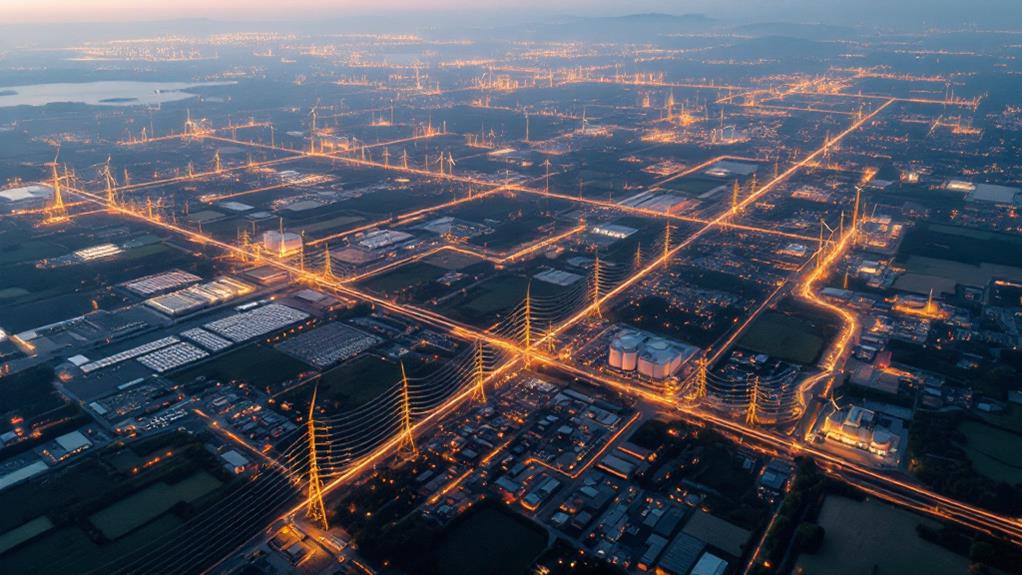
Electricity, once a luxury, is now recognized as a fundamental human right. As global electrification efforts continue, you'll see a push to provide power to every corner of the world. These initiatives aim to improve quality of life, enhance economic development, and reduce poverty in underserved regions.
Smart city planning plays a pivotal role in these efforts. You'll find that modern urban development incorporates energy-efficient designs and renewable energy sources from the ground up. This approach guarantees that growing populations have access to sustainable power while minimizing environmental impact.
Energy efficiency initiatives are at the forefront of global electrification efforts. You'll notice a focus on:
- Implementing advanced metering infrastructure
- Promoting energy-efficient appliances and building standards
- Educating communities on responsible energy consumption
As you look to the future, you'll see that electrification efforts aren't just about providing power. They're about creating sustainable, resilient systems that can support growing populations and changing technologies. By combining smart city planning with energy efficiency initiatives, we're working towards a world where reliable, clean electricity is accessible to all.
Future of Power Distribution
Looking ahead, the future of power distribution is set to revolutionize how we access and use electricity. You'll soon see a shift towards decentralized microgrids, allowing communities to generate and distribute their own power. These localized systems will enhance reliability and reduce dependence on large-scale infrastructure.
Smart grids will become the norm, integrating advanced sensors and communication technologies. They'll enable real-time monitoring and control of power flow, optimizing efficiency and reducing waste. You'll have more control over your energy consumption through demand-side management tools, helping you make informed decisions about when and how to use electricity.
Renewable energy sources will play a larger role, with improved storage solutions addressing intermittency issues. You'll see more widespread adoption of electric vehicles, which can double as mobile energy storage units. Peer-to-peer energy trading platforms will emerge, allowing you to buy and sell excess power directly with neighbors.
As power distribution evolves, you'll experience a more resilient, sustainable, and flexible energy system. This transformation will enable you to become an active participant in the energy paradigm, rather than just a passive consumer.
